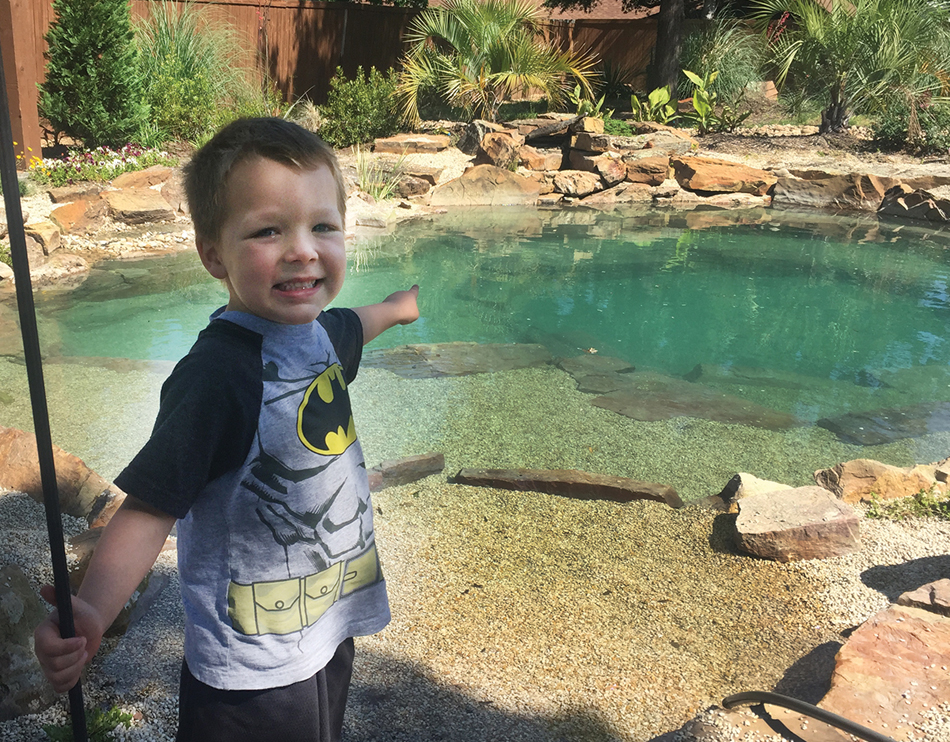Dallas Pond Plants are more than just decorations. They help keep your pond water clear, give fish a place to hide, and make your pond feel alive and balanced. One of the most common questions we get at FncPonds is: How big do pond plants grow?
The answer depends on the type of plant, the sunlight it gets, how much room it has, and how it’s cared for. Let’s break it down in a simple way so you know what to expect and how to keep your pond in great shape.
Types of Dallas Pond Plants & Their Sizes
There are four main types of pond plants, and each grows in its own way. Here’s what you should know:
Floating Pond Plants
These plants float freely on top of the water and don’t grow in soil. They’re great at providing shade and helping control algae.
Examples:
- Water Lettuce, Water Hyacinth: These spread across the surface and can grow about 10 inches wide. If left alone, they can cover a large area of your pond.
- Duckweed, Azolla: Tiny plants that grow quickly—don’t let their size fool you! They can take over a pond in no time.
Tip: Floating Dallas pond plants don’t grow tall, but they can spread fast. Keep an eye on them so they don’t take over.
Underwater (Submerged) Plants
These stay completely underwater and play a big role in keeping your pond healthy by releasing oxygen.
Examples:
- Elodea, Hornwort, Vallisneria: These can grow several feet long and are perfect for fish to hide in.
Tip: Even though they’re out of sight, submerged plants can grow quickly. Regular trimming helps keep them under control.
Dallas Pond Plants Around the Pond Edge (Marginals)
These grow in shallow areas around the pond’s edge, with their roots in water or wet soil and their tops sticking out.
Examples:
- Cattails, Reeds: These can shoot up between 5 and 10 feet high!
- Water Lilies: While the flowers and leaves float, the plant can spread out 6 to 12 feet across.
Tip: These plants need space to grow wide or tall, so plan ahead when planting near the edges.
Moisture-Loving Bog Plants
Bog plants grow best in very damp soil—perfect for planting near waterfalls or in special planting pockets.
Examples:
- Canna Lily, Marsh Marigold, Japanese Iris, Pickerel Weed: These colorful plants usually grow 2 to 4 feet tall and add great texture around your pond.
Tip: Most bog plants grow upright and are easy to enjoy from the patio or garden path.
What Impacts Plant Size?
Here in the Dallas area, the size your pond plants reach can vary depending on:
- Sunlight
Most pond plants need full sun to grow well. More sun means faster, fuller growth. A little shade is okay for some, but too much will slow them down. - Nutrients in the Water
Dallas Pond plants get their “food” from the water. If your pond has fish or organic matter like leaves, your plants may grow quicker due to all the extra nutrients. Just be careful—too much can also cause algae problems. - Space
If a plant doesn’t have room to spread, it may stay small. But with plenty of space and the right conditions, some plants can grow bigger than you might expect.
How to Keep Dallas Pond Plants from Taking Over
While it’s great to see your plants thrive, they can become too much if not managed. Here’s how to keep things in balance:
- Trim back or divide plants once or twice a year to prevent overcrowding.
- Remove old leaves or dead flowers to help keep the water clean.
- Watch floating plants—they grow fast and can take over the pond’s surface.
- Check on water lilies and tall plants so they don’t block sunlight from getting to other plants.
Common Questions from Pond Owners in Dallas
Q: How quickly do pond plants grow?
A: Some, like duckweed, grow extremely fast. Others, like water lilies, may take a full season or two to reach their full size.
Q: Can pond plants grow too large?
A: Yes. Without care, some plants will take over and block light or space. Regular pruning is key.
Q: Will these plants survive a Dallas winter?
A: Many pond plants do fine through mild Texas winters. Tropical varieties may need to be brought in or treated as annuals. We’re happy to help you pick the best types for our local climate.
Q: Is it possible to have too many pond plants?
A: Yes. Too many plants can throw off the balance and affect water quality. We recommend aiming for around 60–70% surface coverage in summer.
Q: Do I need special soil?
A: For potted plants, use heavy garden soil or aquatic planting mix—regular potting soil is too light and can float away.
Need Help with Pond Plants in the Dallas Area?
Whether you’re starting fresh or want help maintaining your current setup, FncPonds has you covered. We know what grows best in North Texas and how to keep your pond healthy and beautiful.
Contact us today to schedule a seasonal check-up or maintenance visit—we’re here to make your pond thrive!






